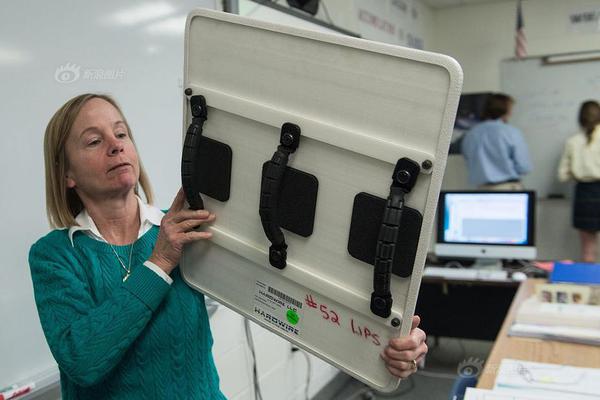
1. Enter "dxdiag" in the run. If a pop-upThe DirectX diagnostic tool dialog box prompts us whether we want to check. Click OK.
2. Check memory: 64-bit operating systems usually require a higher memory capacity to run, and it is recommended that you have at least 4GB of memory.
3. First, select "Computer" and right-click "Properties". You can see the digits of the computer operating system. You can also click "Start", enter "cmd" in the input box, and click "cmd application". Enter "systeminfo" in the cmd interface and press Enter. The digits of the operating system can be seen here.
4. Find the "Installed Memory (RAM)" column in the system information. If the memory capacity exceeds 4GB, the 64-bit operating system can be installed. Check hardware compatibility: Some older models of devices may not support 64-bit operating systems.
1. Right-click "Properties" on the desktop and a window titled "System Properties" pops up. Record whether your system is 32-bit or 64-bit information under the "General" tab. If your system is 64-bit, it will be clearly marked as "x64 Edition", otherwise your system will be 32-bit.
2. Step 1: Right-click "Properties" in "My Computer" on the desktop. Step 2: A window titled "System Properties" pops up, and record the information of whether your system is 32-bit or 64-bit under the "General" tab.
3. If you want to know whether your computer is a 32-bit system or a 64-bit system, you only need to check the system information. The steps are as follows: find "My Computer" on the desktop and click to select it. Right-click, select and click "Properties" in the pop-up menu.
4. Right-click "Properties" in "My Computer" on the desktop; a window with the title "System Properties" pops up, and record the information of whether your system is 32-bit or 64-bit under the "General" tab.
1, First, right-click "My Computer" and select "Properties". Open the system properties box, and then select "General". If it is not clearly marked with x64, it means that the computer is 32-bit. Method 2: Click "Start" and then select "Run". Enter "winmsd.exe" in the window and click OK.
2. Method 1: Start-Run Command Enter the sysdm.cpl or winmsd.exe command in the command box to view the system information. If possible, it will pop up in the system properties box.
3. Right-click "My Computer", "Properties" and "Device Manager" to see how many are under the "Processor" tab. If there are two, it is dual-core, and more than one is multi-core, such as 4-core, 8-core, so as long as it is dual-core and dual-core or above, it is a 64-bit operating system.
4. Check the computer configuration by entering the "dxdiag" command in the run; the specific steps are as follows: enter "dxdiag" in the run. If a DirectX diagnostic tool dialog box pops up, prompting us whether we want to check, click OK.
5. Check how many bit systems your computer is currently using. Take Windows 7 as an example. Right-click on the computer - Properties to view. In addition, a software is recommended, a green single file, which can clearly indicate the operating system digits of the current system.As shown in the figure, the software is divided into three parts, that is, the current system bits.
Binance APK-APP, download it now, new users will receive a novice gift pack.
1. Enter "dxdiag" in the run. If a pop-upThe DirectX diagnostic tool dialog box prompts us whether we want to check. Click OK.
2. Check memory: 64-bit operating systems usually require a higher memory capacity to run, and it is recommended that you have at least 4GB of memory.
3. First, select "Computer" and right-click "Properties". You can see the digits of the computer operating system. You can also click "Start", enter "cmd" in the input box, and click "cmd application". Enter "systeminfo" in the cmd interface and press Enter. The digits of the operating system can be seen here.
4. Find the "Installed Memory (RAM)" column in the system information. If the memory capacity exceeds 4GB, the 64-bit operating system can be installed. Check hardware compatibility: Some older models of devices may not support 64-bit operating systems.
1. Right-click "Properties" on the desktop and a window titled "System Properties" pops up. Record whether your system is 32-bit or 64-bit information under the "General" tab. If your system is 64-bit, it will be clearly marked as "x64 Edition", otherwise your system will be 32-bit.
2. Step 1: Right-click "Properties" in "My Computer" on the desktop. Step 2: A window titled "System Properties" pops up, and record the information of whether your system is 32-bit or 64-bit under the "General" tab.
3. If you want to know whether your computer is a 32-bit system or a 64-bit system, you only need to check the system information. The steps are as follows: find "My Computer" on the desktop and click to select it. Right-click, select and click "Properties" in the pop-up menu.
4. Right-click "Properties" in "My Computer" on the desktop; a window with the title "System Properties" pops up, and record the information of whether your system is 32-bit or 64-bit under the "General" tab.
1, First, right-click "My Computer" and select "Properties". Open the system properties box, and then select "General". If it is not clearly marked with x64, it means that the computer is 32-bit. Method 2: Click "Start" and then select "Run". Enter "winmsd.exe" in the window and click OK.
2. Method 1: Start-Run Command Enter the sysdm.cpl or winmsd.exe command in the command box to view the system information. If possible, it will pop up in the system properties box.
3. Right-click "My Computer", "Properties" and "Device Manager" to see how many are under the "Processor" tab. If there are two, it is dual-core, and more than one is multi-core, such as 4-core, 8-core, so as long as it is dual-core and dual-core or above, it is a 64-bit operating system.
4. Check the computer configuration by entering the "dxdiag" command in the run; the specific steps are as follows: enter "dxdiag" in the run. If a DirectX diagnostic tool dialog box pops up, prompting us whether we want to check, click OK.
5. Check how many bit systems your computer is currently using. Take Windows 7 as an example. Right-click on the computer - Properties to view. In addition, a software is recommended, a green single file, which can clearly indicate the operating system digits of the current system.As shown in the figure, the software is divided into three parts, that is, the current system bits.
 OKX Wallet to exchange
OKX Wallet to exchange
944.43MB
Check OKX Wallet extension
OKX Wallet extension
493.34MB
Check Binance login App
Binance login App
527.52MB
Check OKX Wallet APK
OKX Wallet APK
169.46MB
Check Binance app
Binance app
749.66MB
Check OKX Wallet apk download latest version
OKX Wallet apk download latest version
277.55MB
Check Binance download APK
Binance download APK
494.34MB
Check Binance download
Binance download
925.29MB
Check Binance app
Binance app
667.94MB
Check Binance download
Binance download
244.87MB
Check OKX Wallet app
OKX Wallet app
259.67MB
Check OKX Wallet APK
OKX Wallet APK
679.98MB
Check Binance exchange
Binance exchange
243.33MB
Check Binance download
Binance download
679.83MB
Check OKX Wallet apk download latest version
OKX Wallet apk download latest version
787.43MB
Check Binance APK
Binance APK
753.68MB
Check Binance download Android
Binance download Android
286.42MB
Check Binance login App
Binance login App
866.35MB
Check Binance login
Binance login
245.74MB
Check Binance APK
Binance APK
525.66MB
Check OKX Wallet app
OKX Wallet app
571.64MB
Check Binance Download for PC Windows 10
Binance Download for PC Windows 10
928.52MB
Check Binance download Android
Binance download Android
526.54MB
Check Binance download Android
Binance download Android
465.39MB
Check OKX Wallet app
OKX Wallet app
995.91MB
Check okx.com login
okx.com login
526.88MB
Check Binance US
Binance US
173.83MB
Check Binance login
Binance login
954.47MB
Check Binance download iOS
Binance download iOS
348.48MB
Check Binance app download Play Store
Binance app download Play Store
482.72MB
Check Binance APK
Binance APK
268.49MB
Check Binance APK
Binance APK
583.15MB
Check OKX Wallet to exchange
OKX Wallet to exchange
777.12MB
Check okx.com login
okx.com login
383.54MB
Check Binance download APK
Binance download APK
937.79MB
Check OKX download
OKX download
632.64MB
Check
Scan to install
Binance APK to discover more
Netizen comments More
1360 苦口良药网
2025-02-28 08:50 recommend
222 昊天罔极网
2025-02-28 08:40 recommend
1150 教猱升木网
2025-02-28 08:15 recommend
2449 妨功害能网
2025-02-28 07:52 recommend
513 龙蟠凤逸网
2025-02-28 07:30 recommend